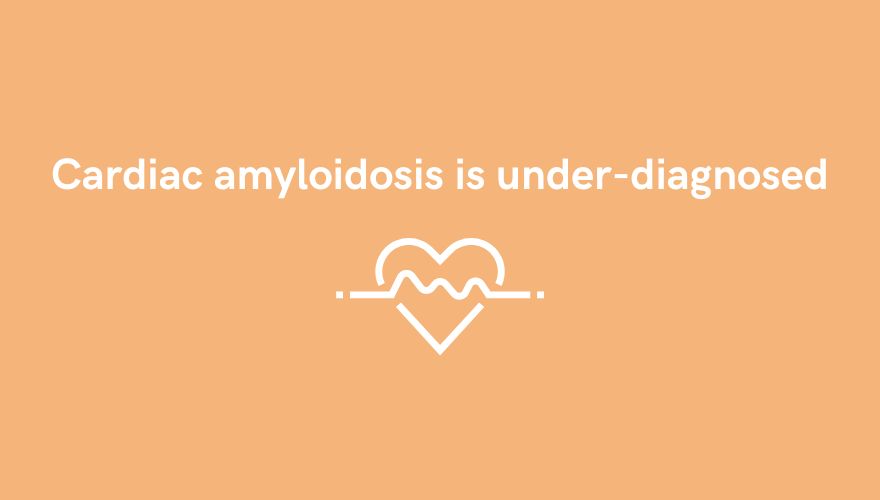We have already mentioned it several times: amyloidosis is a rare disease that is not well known to everyone, even to doctors. The fact that it is so little known often leads to delays in diagnosis, particularly in the case of cardiac amyloidosis. In this article we will explain what cardiac amyloidosis is, present a case study of a patient and explain how to manage the disease.
The case study we will discuss was presented in this report: Amyloid Cardiomyopathy in the Emergency Department
What is Cardiac Amyloidosis?
There are several different types of amyloidosis, each of which is caused by the accumulation of a specific protein. Cardiac amyloidosis is a condition in which abnormal proteins build up in the heart muscle, making it difficult for the heart to function properly. Over time and if not treated properly, this can lead to heart failure: the heart is no longer able to pump blood efficiently from the body.
Read more about cardiac amyloidosis: Cardiac amyloidosis and transplantation
The case study of a patient
An 83-year-old woman presented to the emergency department with increasing dyspnoea and swelling of the lower limbs. She reported a medical history of unspecified heart failure. After some examinations in the emergency department, it was revealed:
- signs of heart failure
- a low voltage electrocardiogram
- a chest X-ray with mild pulmonary oedema
- laboratory evaluation with elevated brain natriuretic peptide and troponin
Cardiac ultrasound in the emergency department showed severe concentric ventricular hypertrophy and interventricular septal wall thickening with a hyperechoic “sparkling” appearance of the myocardium, a slightly reduced left ventricular ejection fraction and a small pericardial effusion.
Finally, it was the complete in-hospital echocardiography and follow-up study of cardiac amyloid pyrophosphate in nuclear medicine that revealed the cause of this patient’s ailments: cardiac amyloidosis.
The patient had initially gone to the emergency room, not knowing what she was suffering from. Most amyloidosis patients will have the same reflex.
However, emergency physicians usually treat acute or chronic systolic heart failure with diuresis and reductions in pre- and afterload with nitrates. It should be essential that identification of amyloid cardiomyopathy should be made on entry to the emergency department as treatment should include loop diuretics but should avoid:
- β-blockers
- angiotensin converting enzyme inhibitors.
- calcium channel blockers
- digoxin
Therefore, in order not to risk worsening the case of patients with cardiac amyloidosis, we make every effort to train our emergency department teams to recognize the disease and to start the first treatments.
How manages the disease?
As we already know, there is no cure for amyloidosis. However, there are several treatments that can help manage the symptoms and slow the progression of the disease, including:
- medicines that can help manage symptoms and improve heart function
- chemotherapy which can be used to reduce the production of abnormal proteins
- Stem cell transplantation used only in some cases to replace problematic cells with healthy cells to produce normal proteins

